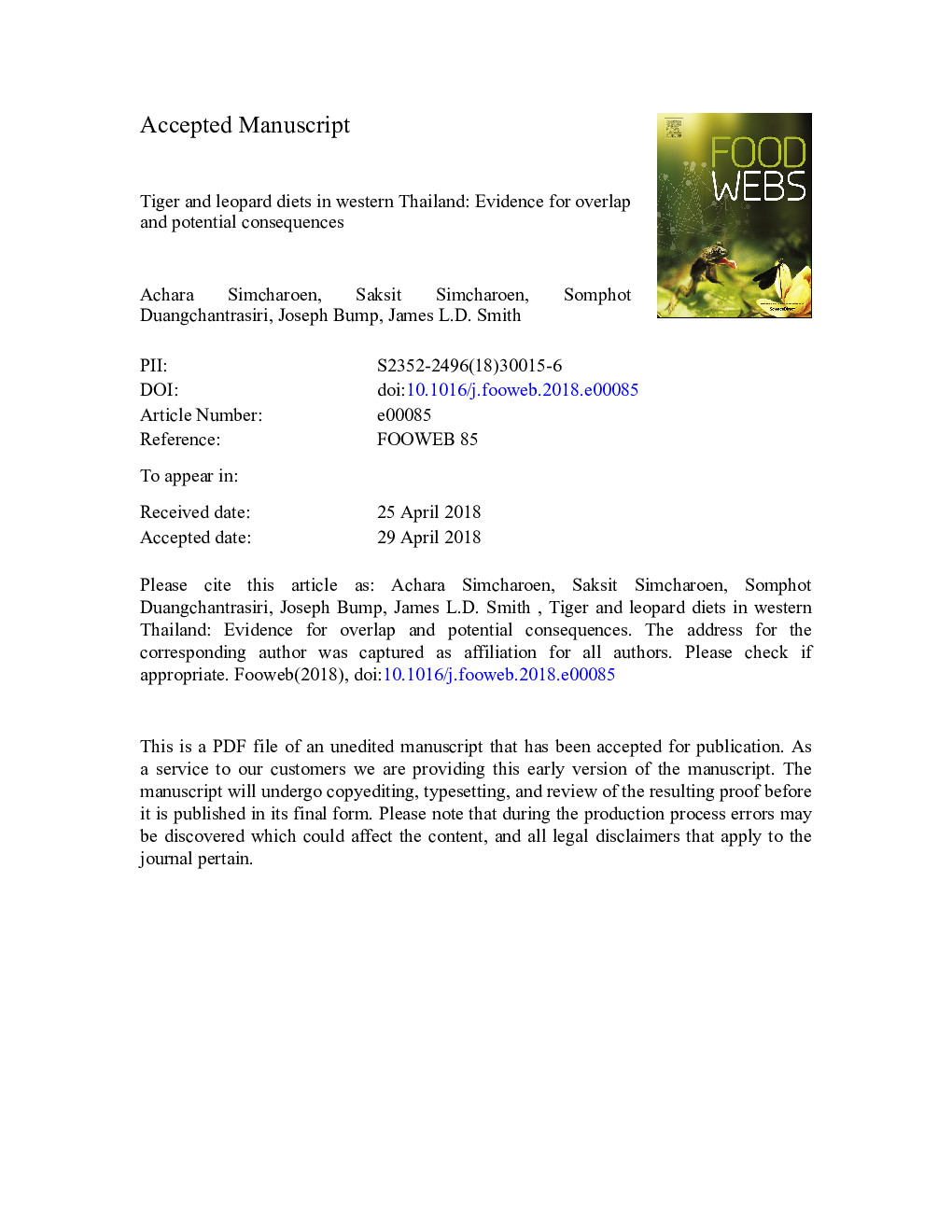| کد مقاله | کد نشریه | سال انتشار | مقاله انگلیسی | نسخه تمام متن |
|---|---|---|---|---|
| 8875289 | 1623630 | 2018 | 23 صفحه PDF | دانلود رایگان |
عنوان انگلیسی مقاله ISI
Tiger and leopard diets in western Thailand: Evidence for overlap and potential consequences
ترجمه فارسی عنوان
رژیم های ببر و لئوپارد در غرب تایلند: شواهد برای همپوشانی و پیامدهای
دانلود مقاله + سفارش ترجمه
دانلود مقاله ISI انگلیسی
رایگان برای ایرانیان
موضوعات مرتبط
علوم زیستی و بیوفناوری
علوم کشاورزی و بیولوژیک
علوم کشاورزی و بیولوژیک (عمومی)
چکیده انگلیسی
Interference competition by tigers, Panthera tigris, is widely reported to reduce leopard, Panthera pardus, density or cause its shift to more a marginal habitat. In Southeast Asia, lack of a medium sized prey, spotted deer (Axis axis), and increased consumption of sambar (Rusa unicolor) by leopards amplifies dietary overlap between these two large felids. In our study area in western Thailand, leopard density was 2.4 times that of tigers. Using scat analysis we estimated prey biomass in the diet of each species to examine resource competition between these species. Tigers had a 0.89 spatial overlap with leopards and leopards a 0.92 overlap with tigers. Larger prey in this system (>100â¯kg) composed 89.8 Ackerman's coefficient, ACF, and 79.3% Chakrabati's coefficient, CCF of the biomass in tiger diet and 47.0% (ACF) and 45.3% (CCF) of the biomass in leopard diet. Dietary overlap of prey >100â¯kg versus smaller prey (â¤37â¯kg) between these felids was 74.4% (ACF) and 81.2% (CCF). Dense cover at our site may reduce interference competition from tigers. In turn, high leopard density and leopard consumption of young sambar likely increases resource competition with tigers and thus potentially reduces tiger density. Given current small tiger population sizes, it is important to recognize that leopards may compete with and potentially suppress tiger numbers at some locations throughout their range and this topic needs further study.
ناشر
Database: Elsevier - ScienceDirect (ساینس دایرکت)
Journal: Food Webs - Volume 15, June 2018, e00085
Journal: Food Webs - Volume 15, June 2018, e00085
نویسندگان
Achara Simcharoen, Saksit Simcharoen, Somphot Duangchantrasiri, Joseph Bump, James L.D. Smith,
